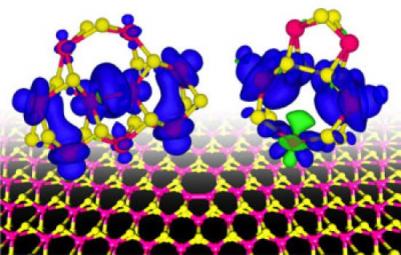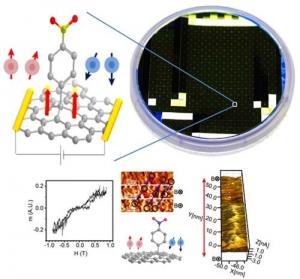Video lecture: spin-orbitronics and magnetic skyrmions
Albert Fert, recipient of the 2007 Nobel Prize in Physics, gave a lecture a few days ago, titled novel directions for spintronics: spin-orbitronics and magnetic skyrmions:
Albert Fert, recipient of the 2007 Nobel Prize in Physics, gave a lecture a few days ago, titled novel directions for spintronics: spin-orbitronics and magnetic skyrmions:
Researchers from Rice University calculated that imperfections in certain 2D materials create the conditions by which nanoscale magnetic fields arise. According to the researchers this could lead towards new strategies in Spintronics research.

The researchers say that those grain boundaries in 2D semiconducting materials known as dichalcogenides (hybrids that combine transition metal and chalcogen atoms) can be magnetic. The researchers focused on molybdenum disulfide (MDS) grown using CVD. In graphene, the boundaries are weak points, but in dichalcogenides, they have unique properties, and they "squeeze magnetism out of nonmagnetic material".
Researchers from UC Berkeley, Florida International University (FIU) and the Georgia Institute of Technology demonstrated for the first time the presence of magnetic properties in graphene nanostructures at room temperature. This could lead towards Spintronics applications.

To achieve this they functionalized the graphene with nitrophenyl. The researchers thus confirmed the presence of magnetic order in nanoparticle-functionalized graphene. The graphene was epitaxially grown at Georgia Tech, chemically functionalized at UC Riverside and studied at FIU and UC Berkeley.